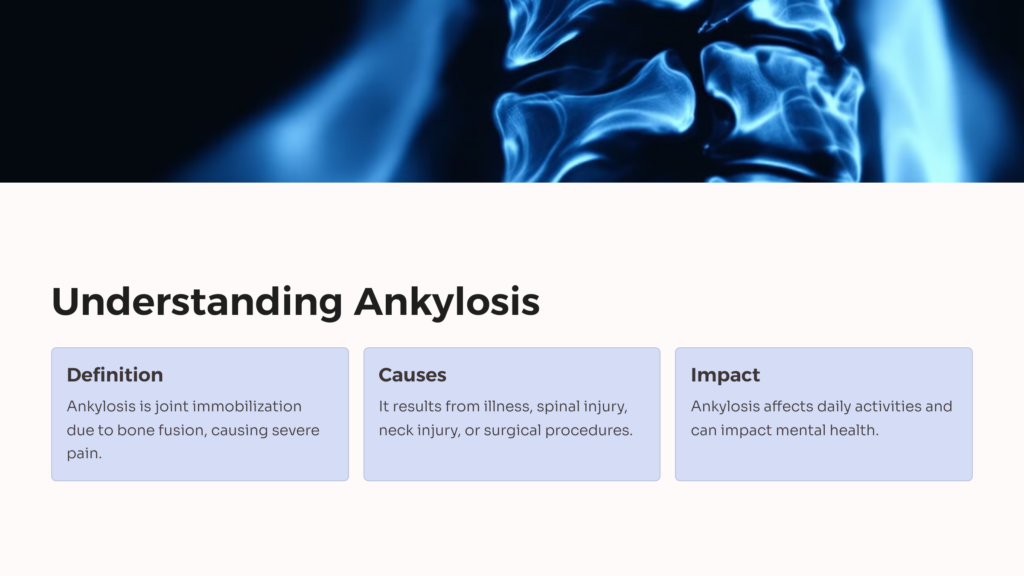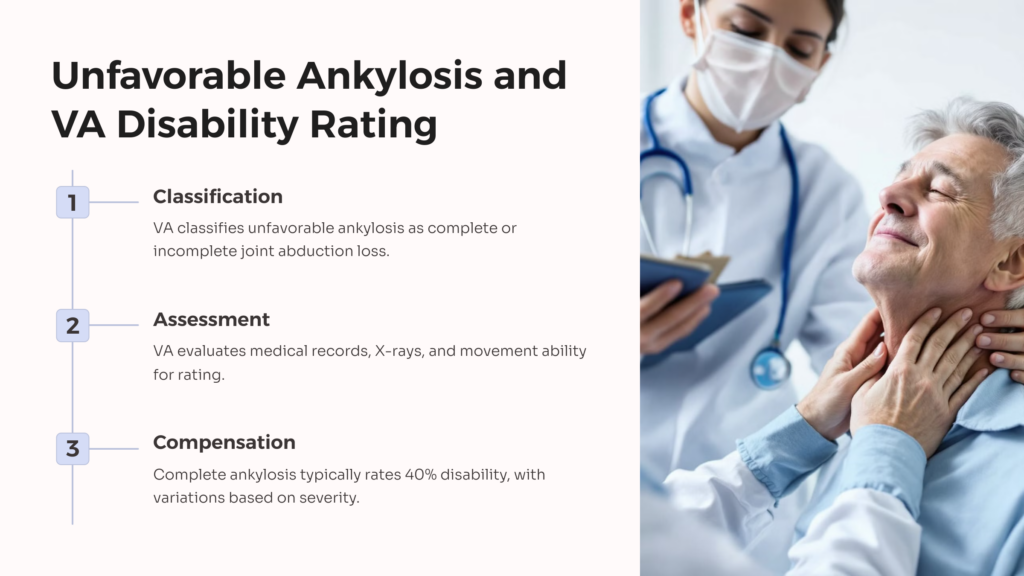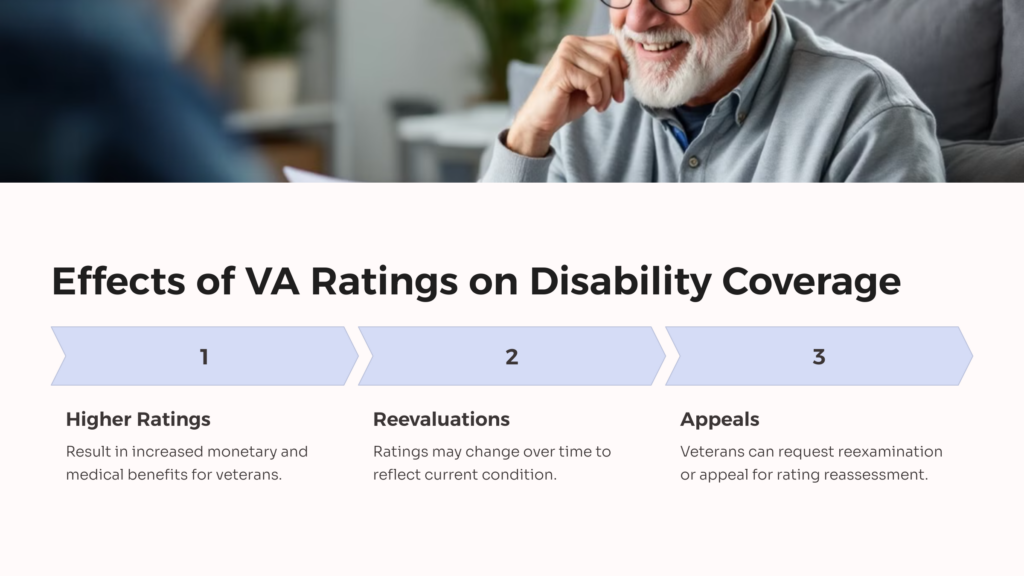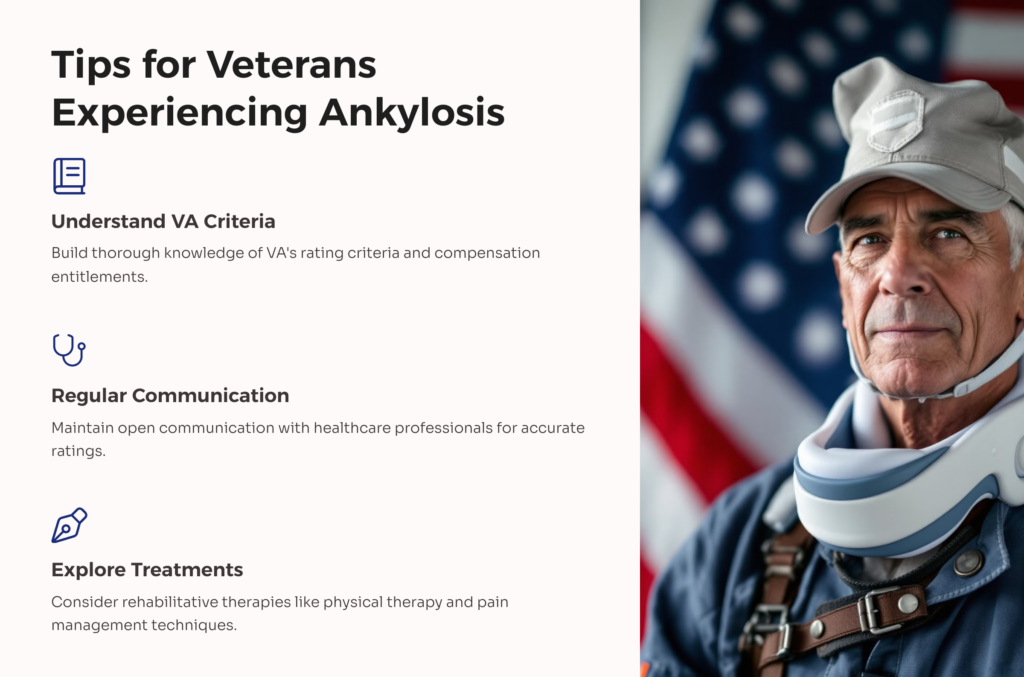The VA disability rating system is a tool employed to measure the severity of a disability caused by a veteran’s military service. This article will delve into the subject of ankylosis, a severe joint condition that can cause severe back and neck pain, and the VA rating system and VA disability benefits for neck conditions. This article will navigate back and neck VA ratings for unfavorable ankylosis.
Understanding Ankylosis

Ankylosis is a serious health condition that results in immobilization of a joint due to the fusion of bones, causing severe spinal and neck pain. This arises due to illness, spinal injury, neck injury, or surgical procedures, affecting the everyday lifestyle of an individual to various extents depending upon the symptom severity. Veterans may be particularly affected by this, as physically demanding roles in the military may lead to higher chances of neck injury, accidents, or damage to their joints, spines, or limbs.
For servicemen and women, ankylosis can present unique challenges, directly influencing their ability to perform their duties. Limited, painful motion can hamper routine physical activities and indirectly impact their mental health due to the accompanied pain and distress resulting from this condition.
Unfavorable Ankylosis and VA Disability Rating

In the VA rating system, unfavorable ankylosis is generally classified as complete or incomplete loss of the ability to abduct a joint. The symptom severity will vary widely by case and have different classification metrics in terms of VA disability benefits.
Spinal cord injury chronic neck pain are taken seriously by Veterans Affairs. The VA assesses ankylosis on a scale that grades the severity of the condition. For instance, complete ankylosis is rated at 40% disability compensation, while favorable ankylosis may fetch a lower rating. The condition is judged based on a veteran’s medical record, X-ray findings, and the ability to perform normal movements.
Back and Neck VA Ratings for Unfavorable Ankylosis
In terms of ankylosis of the back and neck, the VA holds a meticulous grading system. If unfavorable ankylosis results in a forward-flexed posture, leading to limited and painful motion in the spine, the veteran may be granted a rating of 50% disability.
However, if the entire spine cannot bend forward at all, a veteran may be assigned a maximum rating of 100% disability for ankylosis of the spine, leading to a much higher level of VA benefits. The severity and impact of the ankylosis, the ability to carry out normal daily activities, and the neck disability’s overall effect on a veteran’s life play significant roles in VA disability ratings.
Effects of VA Ratings on Disability Coverage

VA disability ratings directly impact the monetary and medical benefits for veterans. Higher ratings, more disability and hence, higher VA benefits. However, it is crucial to note that ratings are not set in stone and may undergo reevaluations over time to account for the incapacitating spinal injury of the veteran.
If a veteran believes their ankylosis has been inaccurately assessed, they can request a reexamination or, if necessary, appeal for a re-evaluation of their VA disability claim. The appeal process can take time, but it is a significant avenue for veterans who believe their initial rating doesn’t accurately reflect their neck condition.
Multiple veteran experiences illustrate the challenging journey through VA ratings and managing ankylosis. Serviceman A, after years of severe back pain, was diagnosed with unfavorable ankylosis of the spine and received a 40% disability rating. He sought physical therapy, which led to marginal relief over time. On the other side, Servicewoman B was diagnosed with complete ankylosis and was unable to perform her duties, leading to a 100% disability rating.
These examples illustrate the varying severity of ankylosis and how it influences VA ratings, the veterans’ daily lives, and the compensation they receive.
Tips for Servicemen and Women Experiencing Ankylosis

If you are a veteran dealing with ankylosis, it’s important to build a thorough understanding of VA’s rating criteria and the VA disability compensation you’re entitled to. Regular communication with healthcare professionals can ensure an accurate rating. Going to a CP exam with a VA healthcare provider can also help in getting the right VA rating for neck conditions.
Additional to that, several rehabilitative therapies and treatments are available to manage ankylosis, including physical therapy, surgical corrections, and pain management techniques. It’s important to consult a medical professional when deciding upon treatment options. Always explore resources and community support offered by the VA to manage your condition effectively.
AllVeteran Is Here To Help
Understanding the complex relationship between ankylosis and VA disability ratings can be challenging. However, knowledge and awareness about the topic can provide crucial help for veterans suffering from ankylosis to navigate the diagnosis, submit a VA disability claim, and manage the condition.
Take our quiz at AllVeteran.com today for a free medical evidence screening, and start your benefits journey.
 AllVeteran.com Advisors
AllVeteran.com Advisors
With expertise spanning local, state, and federal benefit programs, our team is dedicated to guiding individuals towards the perfect program tailored to their unique circumstances.


















